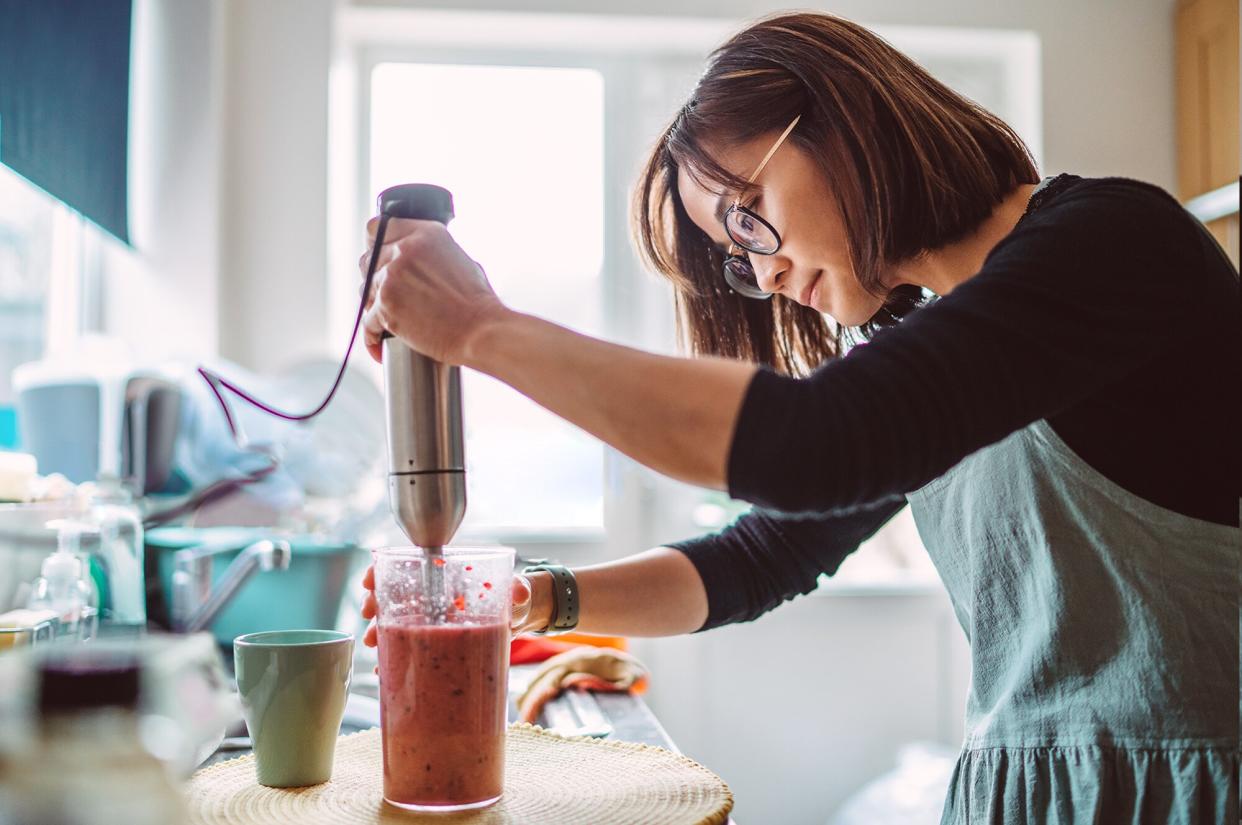Do You Need an Immersion Blender and a Regular Blender?

Tang Ming Tung / Getty Images
Limited storage is a real issue but even if you have plenty of space in your kitchen, there's only so much need for all those kitchen gadgets and gizmos. (When was the last time you used that pasta maker?) So while a recipe may call for an immersion blender—you know, one of those handheld, stick-shaped tools that you can immerse directly in a pot of soup—do you really need it? Or would a regular blender work just fine? And if you have an immersion blender, do you need to upgrade to a larger, more powerful regular blender?
Whether you're setting up your first grown-up kitchen, looking to declutter, or simply want to know if that immersion blender is really worth clicking, buy now, here's what you need to know.
Related: These Are the Tools That Martha Says Every Home Cook Should Have
When You Should Use a Regular Blender
A high-quality regular blender is a kitchen essential. It's a versatile tool that you can use to make everything from soups to alt milks to nut butters, and they are instrumental for blending big batches of food or handling hard ingredients such as ice or frozen fruit.
"Regular blenders are used to make pourable purées, such as smoothies, soups, dressings, and sauces," says Ann Ziata, chef at the Institute of Culinary Education. "Not all regular blenders are created equal, so you will notice a difference between lower-end and higher-end blenders. A high-powered blender will create a perfect, velvety smooth texture from fibrous ingredients like fruit, vegetables, and nuts that an immersion blender would not be able to achieve. "
When the Immersion Blender Excels
Thanks to their small size, immersion blenders are helpful for small batch recipes like homemade whipped cream, ganache, and vinaigrettes.
Another advantage of the immersion blender is that you can blend ingredients without needing to transfer them. Many home cooks like to use an immersion blender when making soup or blending other hot liquids, rather than go through the sometimes messy process of transferring the liquid to a regular blender and needing to clean the blender after use. But as Ziata notes, an immersion blender can replicate the smoothness of a lower-end blender, but will take longer to do so, and doesn't have the same power as a high-end blender. "For soups, you can pulse the immersion blender a few times right in the pot (with the heat off), partially blending it, to add thickness to the soup without completely puréeing it. This works great in bean soups," she says.
The Verdict: Do You Need Both an Immersion Blender and a Regular Blender?
The short answer is you probably don't need both an immersion blender and a regular blender. Ziata says that as long as you have a quality heavy-duty regular blender, you'll be able to do plenty.
"Both are helpful to have and have different uses," says Ziata. "I have found that many times, when I didn't have an immersion blender, I was able to improvise with a food processor or another tool and get the results I wanted."
Her go-to is a regular blender: "There is absolutely no substitute, and every well-equipped kitchen needs a good one."

